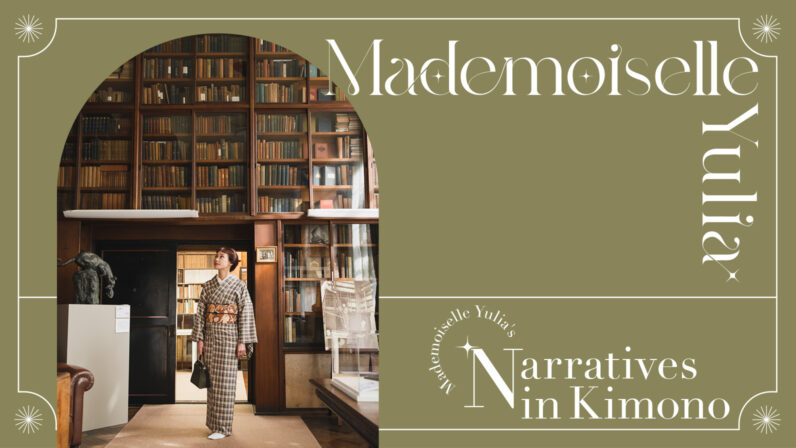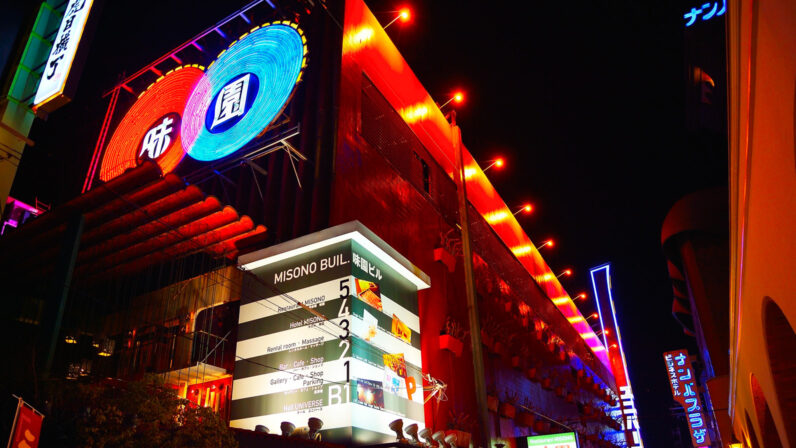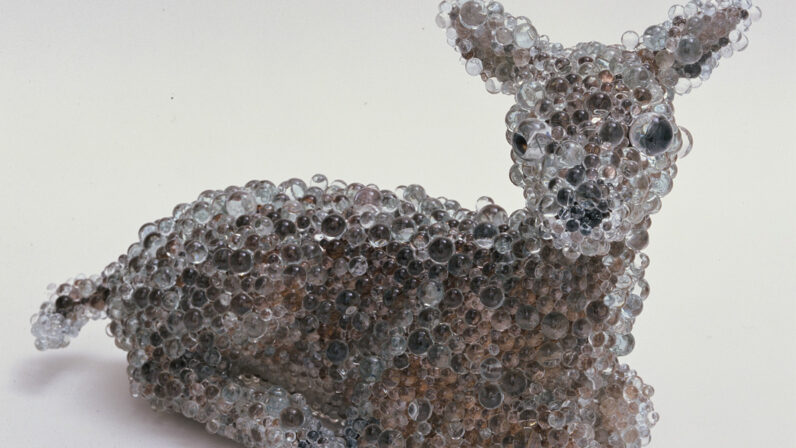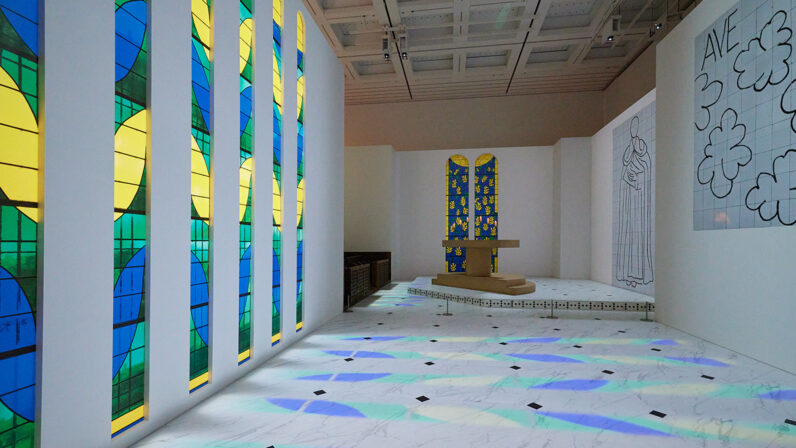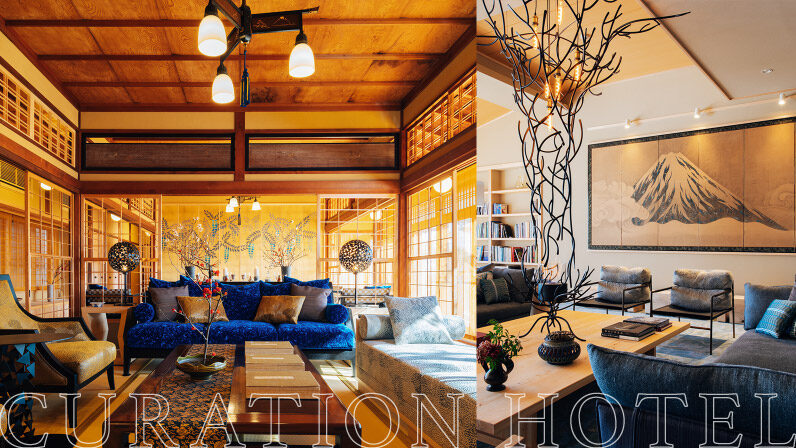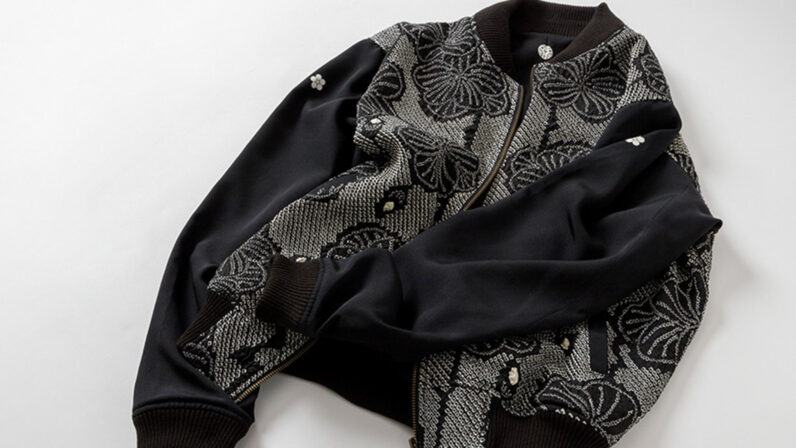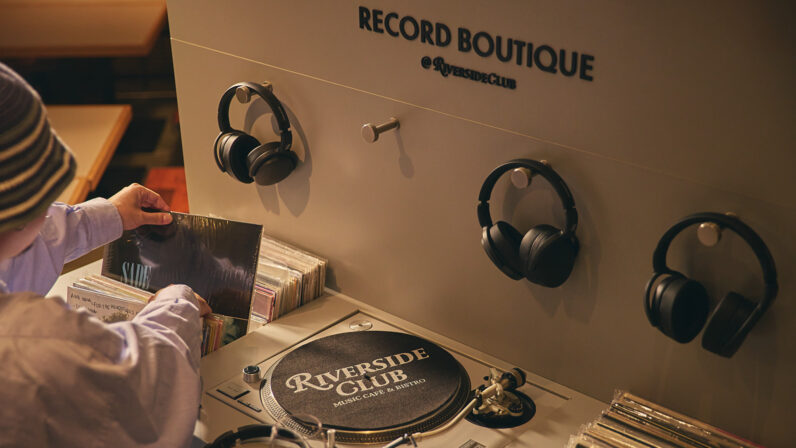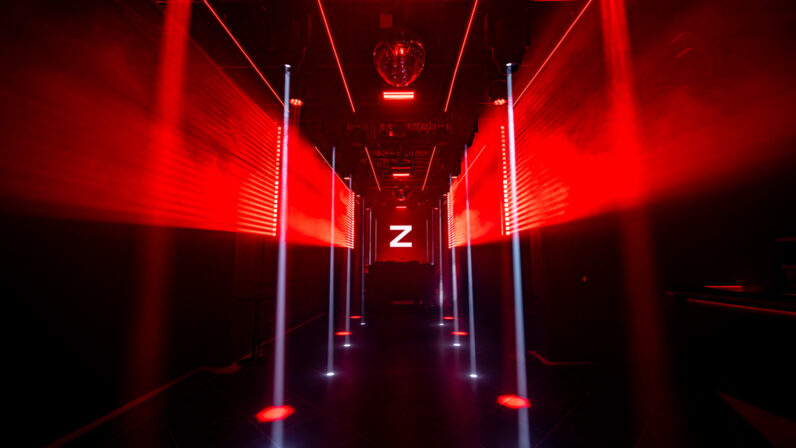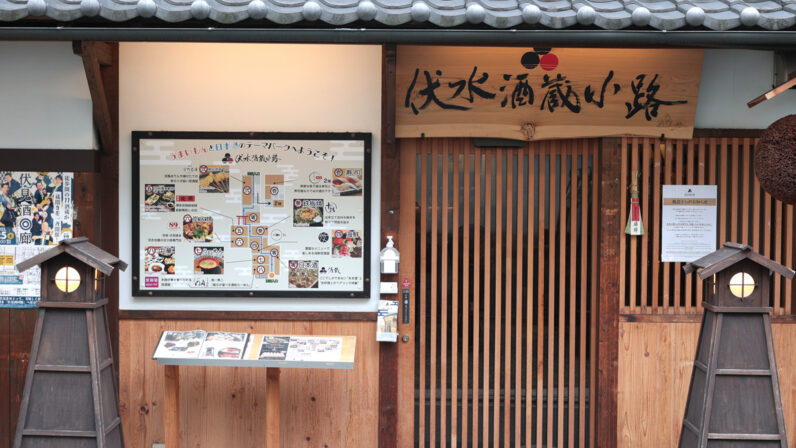It’s been four years since the last Roppongi Art Night, so here at ZEROMILE, we were excited to experience the triumphant return of the two-day, all-night event for 2023! In this report, we aim to offer you a glimpse into the incredible artworks that were on display throughout the city during the event held on May 27th and May 28th.
This year’s spotlight was on the artists Takashi Kuribayashi + Cinema Caravan and Tomoko Konoike, who came together with various large-scale works under the theme “An Illustrated Book of Urban Creatures.” Given the four-year hiatus, it was no surprise that the event attracted many visitors, not only from Japan but also from around the world.
Starting at Roppongi Hills
From Roppongi Station on the Tokyo Metro Hibiya Line, I first took Exit 1C to reach the main venue, Roppongi Hills.
As I ascended the escalators of the Metro Hat building, I saw ‘Turbulence‘ above me, a work by the balloon art unit DAISY BALLOON.
By weaving and distorting long rubber balloons into a flat surface and warping its surface, Turbulence is a metaphor for the highly volatile, uncertain, complex, and obscure dimension of the contradiction between modern society and the natural environment.
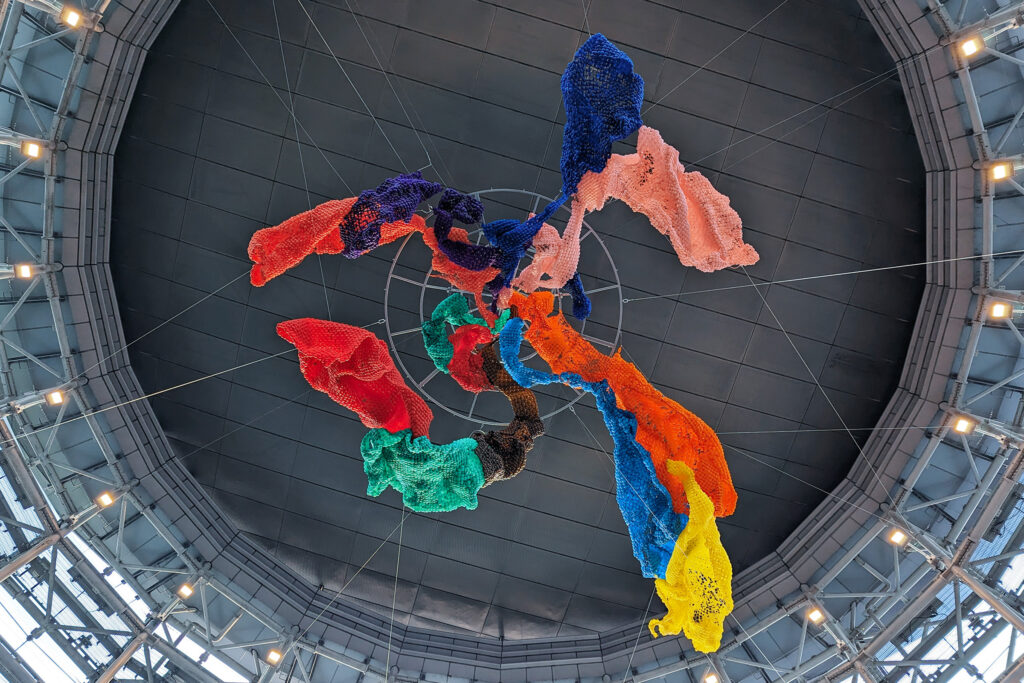
DAISY BALLOON ‘Turbulence‘
The work is not about criticizing contradictions and absurdity but aims to allow viewers to reflect on their own inner conflicts and provide hope that it is possible to adapt to the unpredictable and turbulent world around them.
The colorful rainbow colors, which were at odds with the irregularity and instability of the shapes, brightened my mood as I looked up.
Upon arriving at 66 Plaza after descending the escalator, I immediately ran into Emmanuelle Moureaux‘s work titled 100 colors no.43 “memory”.
The installation had many translucent layers transitioning in color, and upon closer inspection, I noticed that each piece was marked with a printed number.
In this work, the white number positioned at the forefront is the current year 2023, while the purple piece at the back has the number 2003. These numbers symbolize the progression of time by years in the calendar and represent the various layers of memories. This colorful space of recollection and passing time is a gathering place where people can come together, think, and reminisce.
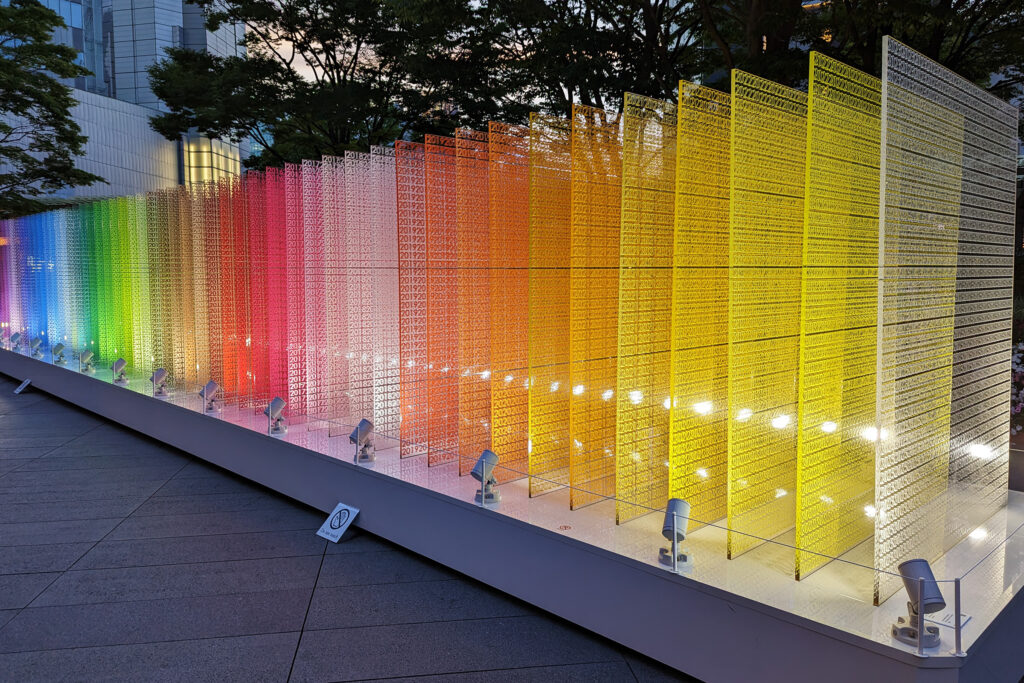
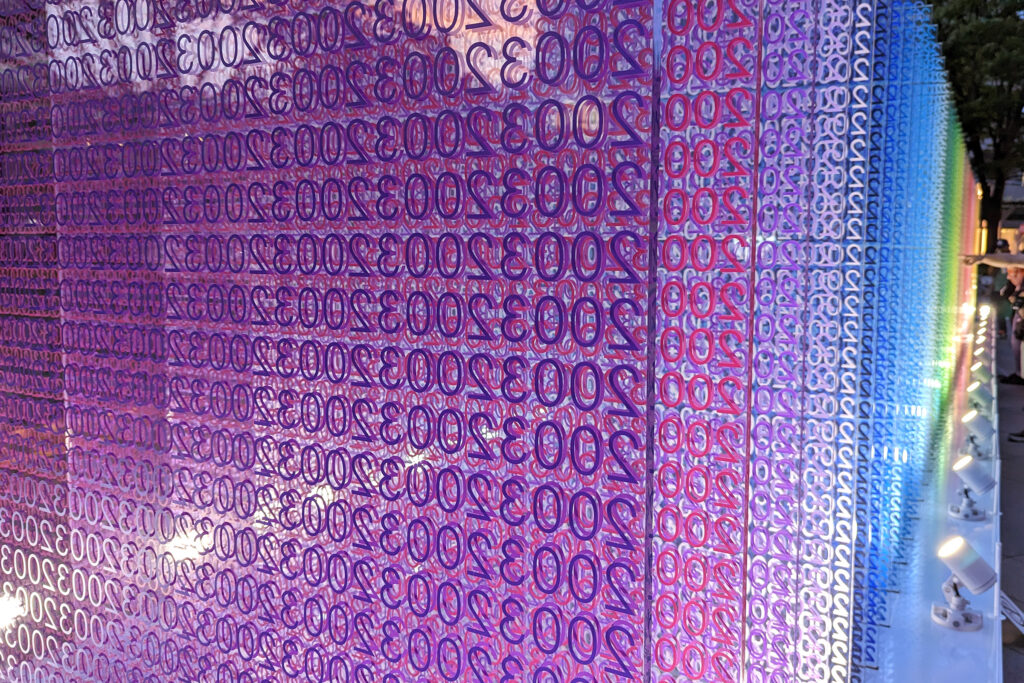
Emmanuelle Moureaux ‘100 colors no.43 “memory”‘
Stepping into the West Walk, I encountered the mixed-media installation SHUKU by Maki Okojima + Maquis, made of glass, ironwork, plants, LED lighting, sound, and other elements.g
Throughout Japan, there exist numerous deities whose origins remain uncertain. Shuku is one such deity that has been worshiped across different regions under various names since ancient times.
This work is a contemporary rendition of Shuku as a “cyborg deity” that blends elements of nature and man-made, organic and inorganic, and blurs the boundaries between humans and other species.
The presence of LED lights glowing within the mirrored glass dodecahedron over 1 meter in diameter, simulating the movements of a living creature, coupled with the sound of water, adds to the air of mystery surrounding the installation.
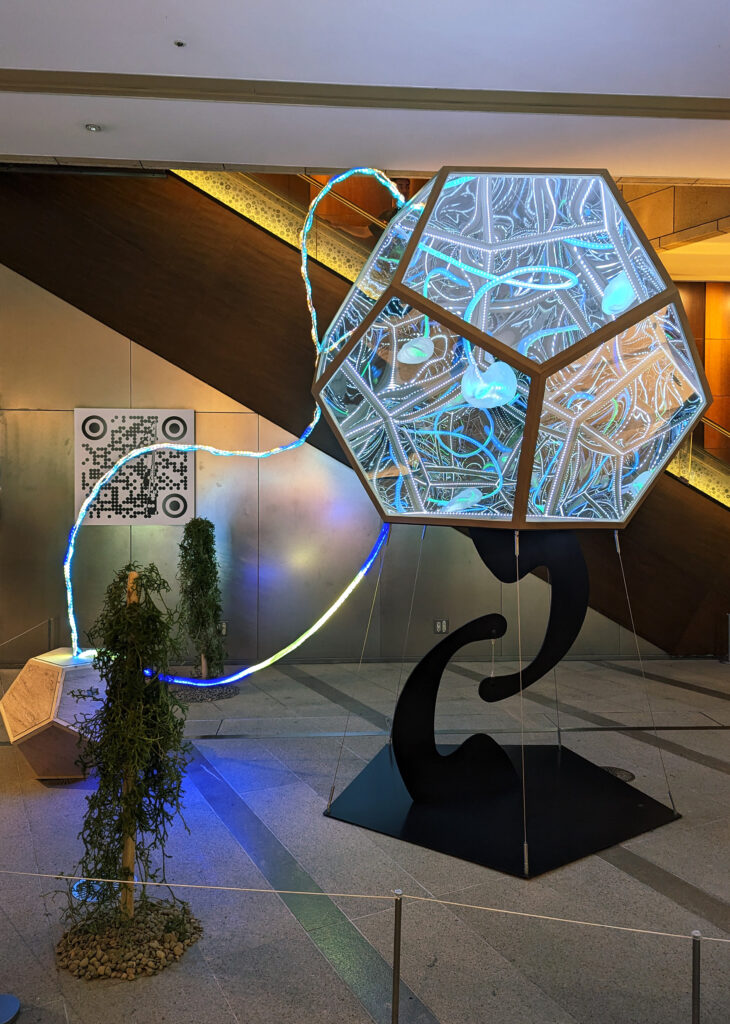
Maki Okojima + Maquis ‘SHUKU’
As I continued past the stores on the West Walk towards the exit, the dreamy pink world of Makoto Egashira’s ‘DX Fluffy Blanket Dream House‘ came into view.
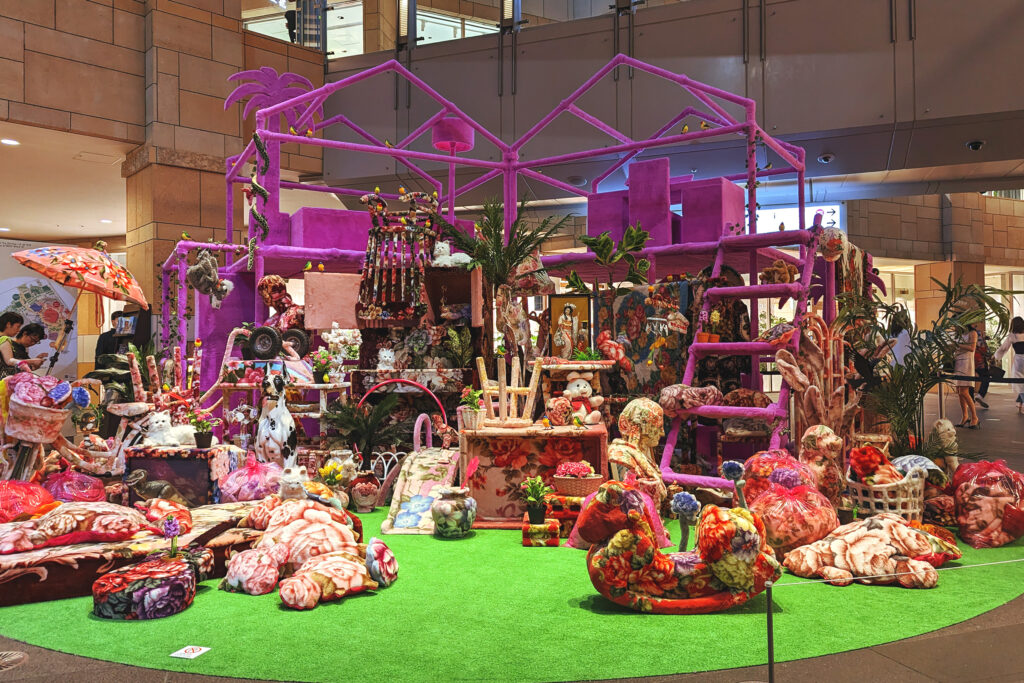
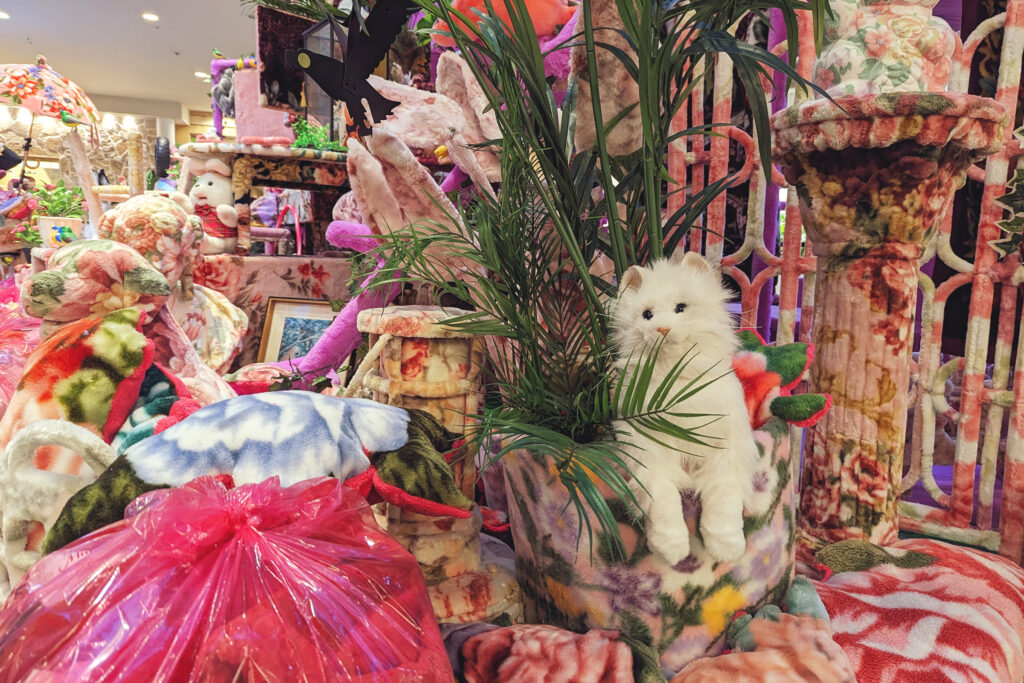
Makoto Egashira ‘DX Fluffy Blanket Dream House’
This playful work incorporates numerous flower-patterned blankets, which are commonly seen in older Japanese homes.
According to the artist, Makoto Egashira, his awareness of these blankets from his parents’ house was sparked when his friends teasingly remarked on their tackiness when visiting his home. They were something he hadn’t given much thought to before then, but this embarrassing interaction inspired the theme that would run through his future works.
Seeing this work, I recalled my own personal experience when I began living independently. I searched for a plain blanket but couldn’t find one that matched the comfortable weight and pleasant texture of the dated blanket from my parents’ house. I felt frustrated, questioning why it had to be that specific pattern and why it couldn’t be a solid color, and I’m still on the hunt for the perfect blanket….
While being made of these common household blankets, the artwork exudes a whimsical Rococo style, evoking a sense of Western luxury coupled with a subtle hint of 1970s nostalgia.
As I stepped out of the West Walk, the Suntory Whiskey Hibiki, ART OF HIBIKI booth stood right before me, and I couldn’t resist checking it out. Inside the booth, I discovered an elegant space adorned with an exquisite array of sake bottles and a welcoming bar counter, inviting me to sample some of them. It was a wonderful opportunity to savor the flavors of Hibiki while enjoying the night exhibition.
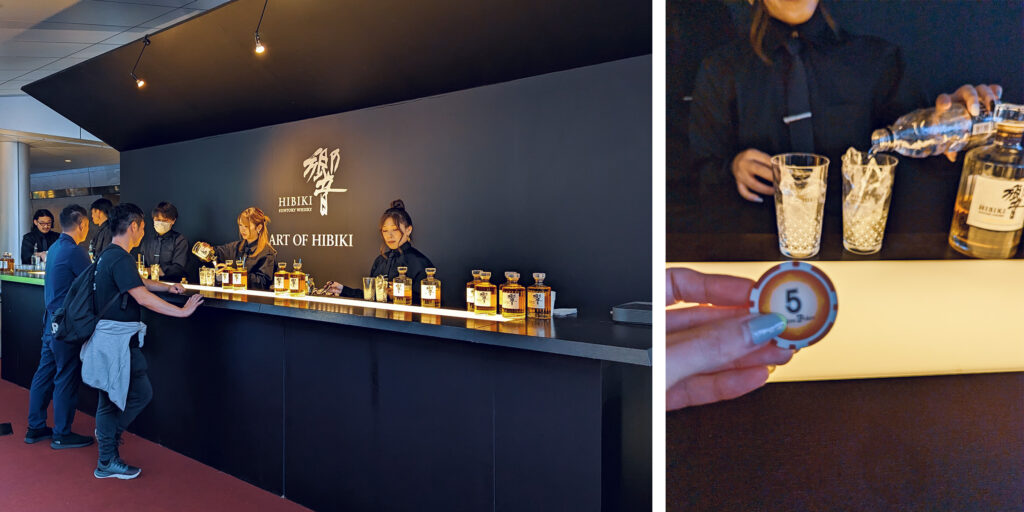
You could buy coins and make your drink order at the counter.
The exhibition included videos and bottles of special sake made in collaboration with traditional crafts, enhancing the whiskey experience on a deeper level.
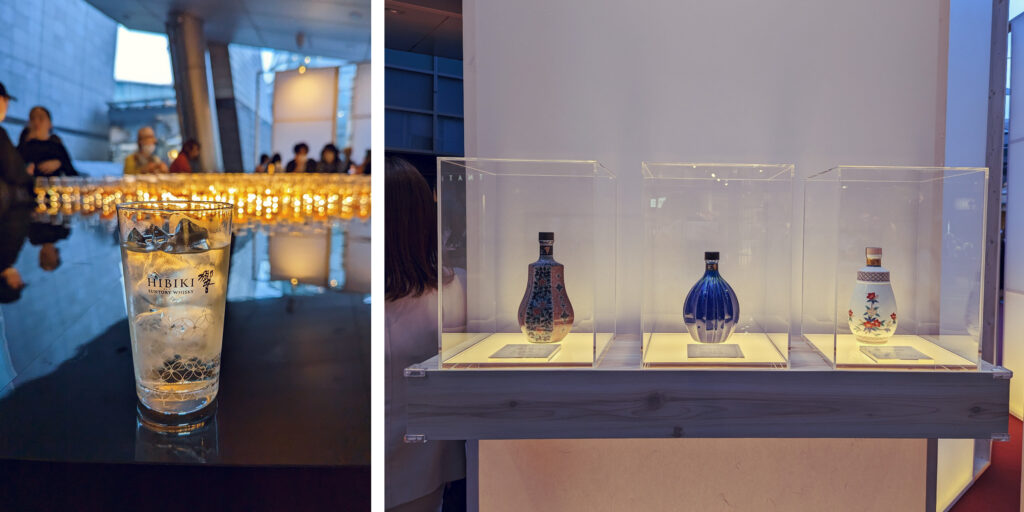
Exhibitions Throughout the City
As I made my way toward Tokyo Midtown, I crossed paths with numerous other artworks intertwined throughout the city.
Just after leaving Roppongi Hills, I stumbled upon a vacant lot along Roppongi Dori adorned with a collection of large-scale, colorful,three-dimensional faces, each expressing a different emotion. Reaching the height of a person, the remarkable sculptures were none other than Sato Keiichi‘s nutty nutty.

Sato Keiichi, ‘nutty nutty’
Covering the outer wall of the vacant lot was Mitsuki Naka‘s work titled ‘NEW MIX’.
The work depicts a vibrant image of a dynamic musical instrument with vigorously moving arms and legs in an effort to convey the idea that appreciation for music fosters a profound understanding of humanity. With its bold and colorful composition reminiscent of graffiti art, the piece seamlessly blended into the vibrant atmosphere of Roppongi.
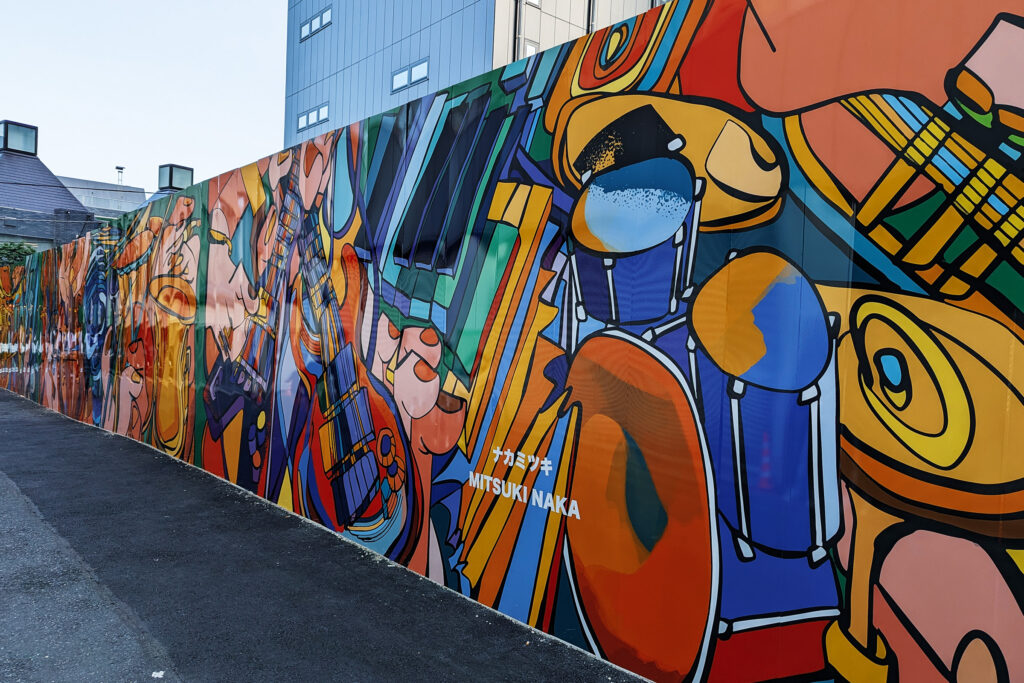
MITSUKI NAKA, ‘NEW MIX’
At Roppongi intersection, I came across the three-dimensional work, ‘Fellows in Roppongi’, crafted by Jin Hasegawa.
Observing the artwork, I noticed the shapes of people pausing their bicycles and others leisurely sitting around, evoking a sense of everyday life and ordinary activities that one might not typically associate with the bustling Roppongi downtown.
The work was conceived with the notion that the true essence of Roppongi can be seen by observing the daily lives of the individuals coming and going at the intersection while also considering the local neighborhood community that may not be immediately apparent.
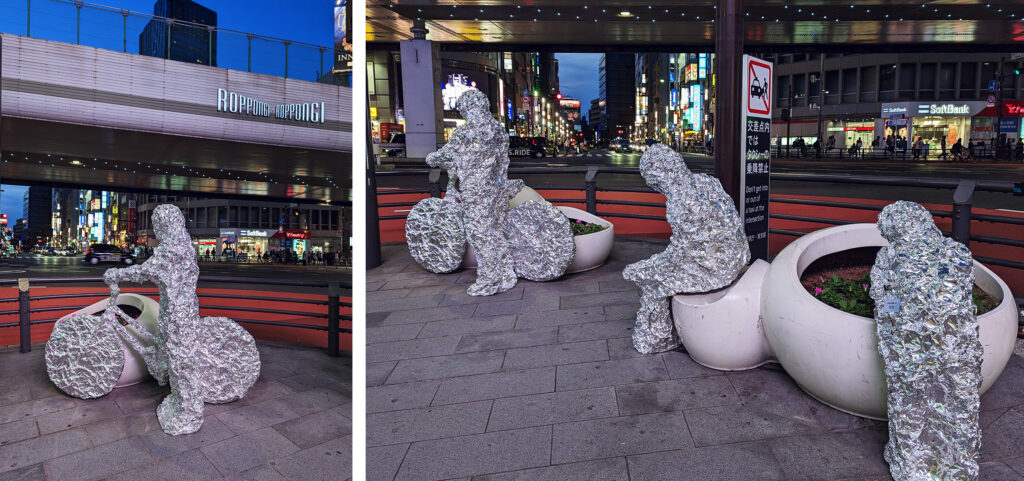
Jin Hasegawa, ‘Fellows in Roppongi’
If you happen to find yourself at the Roppongi intersection, I highly recommend taking a moment to turn right onto Gaien Higashi Dori. Along this road, you’ll be able to capture a breathtaking photo of the iconic Tokyo Tower, which perfectly encapsulates the essence of the vibrant city.
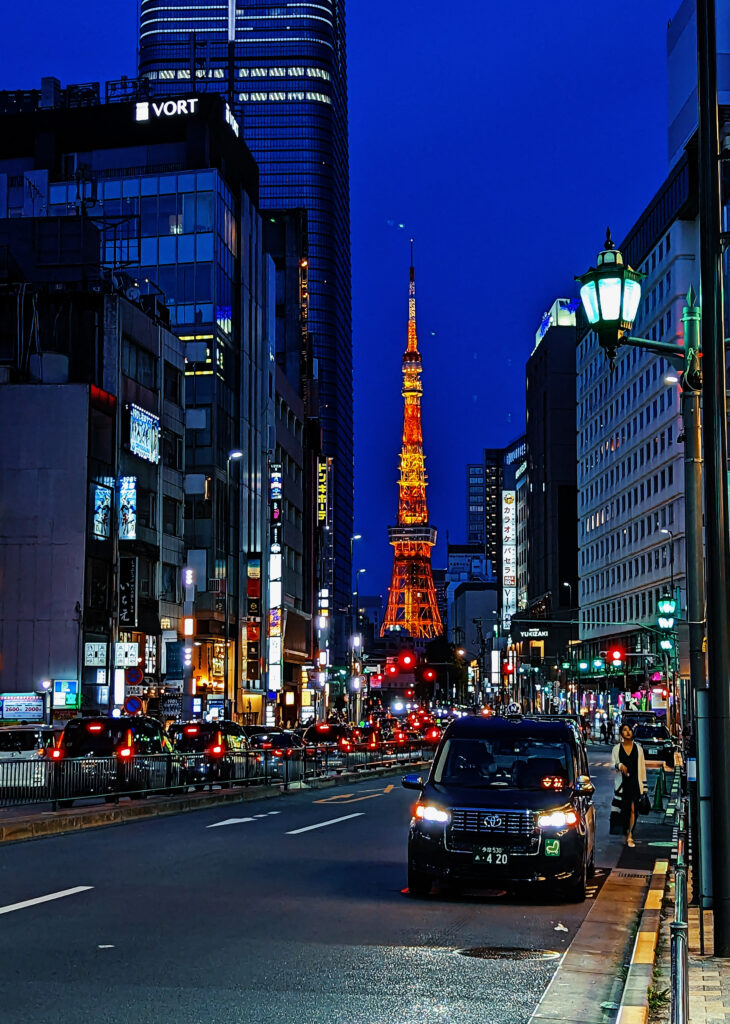
View of Tokyo Tower from Gaien Higashi Dori
Ending at Tokyo Midtown
Numerous artworks were also on display throughout the interior of the Galleria and the garden within Tokyo Midtown.
Strolling leisurely through the illuminated garden, intriguing lights caught my attention. This was ‘Empty Device’ by studio SHOKO NARITA Street Art Performances. The workshop allowed visitors to create vibrant hues reminiscent of the sky’s colors using special glass, similar to how the sky changes color through a phenomenon known as Rayleigh scattering. By rearranging glass, light, and mirrors, visitors could explore and discover their own unique representation of the sky.
Although I didn’t have a chance to experience the exhibit hands on due to its overwhelming popularity, it was clear why people were instantly drawn to this mesmerizing work.

studio SHOKO NARITA Street Art Performances ‘Empty Device’
As I entered Midtown and looked upward from the first floor of the Galleria, the captivating sight of Tomoko Konoike‘s work, ‘Takamatsu→Echizen→Shizuoka→Roppongi Black Kite ‘came gracefully fluttering into view.
Constructed from discarded leather unsuitable for sale within the realm of consumerism, this piece conveys a profound message. It emphasizes that nature exists independently of human activities and should not be subjected to commercial exploitation.
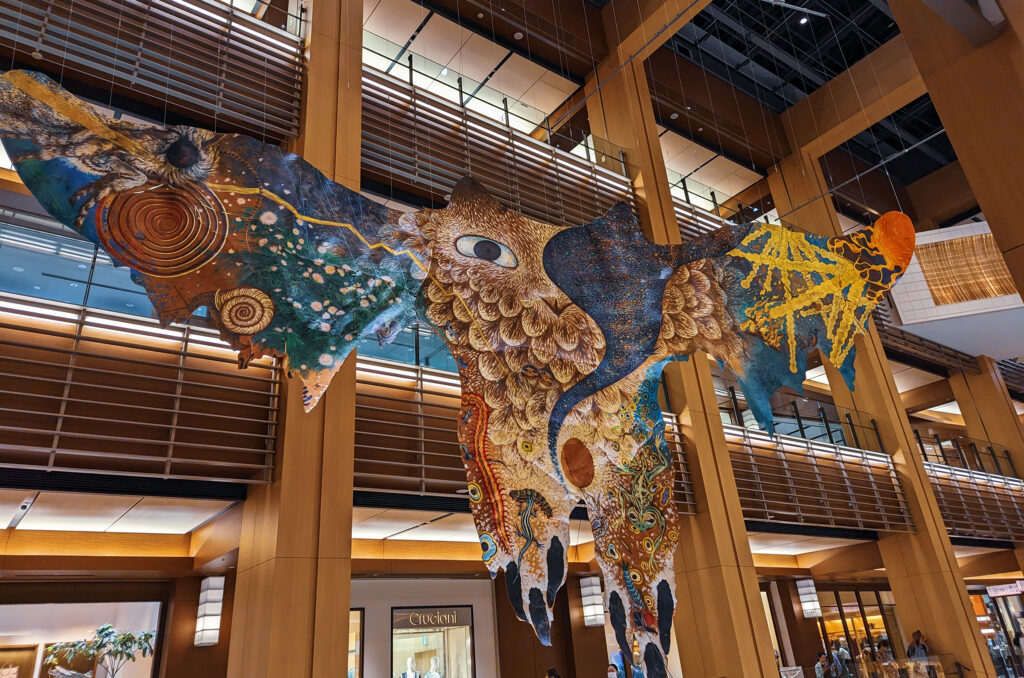
Tomoko Konoike ‘Takamatsu→Echizen→Shizuoka→Roppongi Black Kite’
At the end of the evening, I took in the performance ‘White Wings‘ by Close-Act Theatre, an internationally acclaimed performance company from the Netherlands established in 1991.
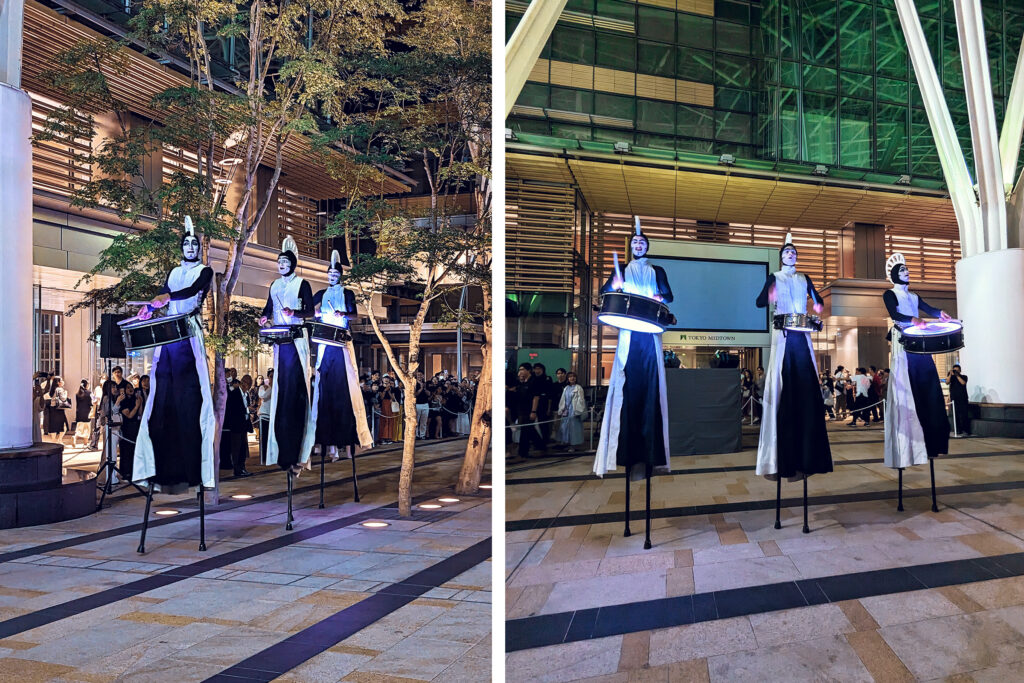
Towering figures over three meters tall appeared, adorned in luminescent attire. With the beat of drums and cheers from the crowd, they began a mesmerizing parade around the plaza while balancing on stilts.
The parade circled around the plaza as excitement built up for the performance to begin. Performers resembling white-winged fairies moved in an enchanting manner, and a golden diva serenaded the spectators with a voice that was both beautiful and mysterious.
I felt transported into a fantastical realm, with the sensation of having wandered into a world of magic and wonder.

The performance was also presented during the opening ceremony, but when performed again in the evening, it seemed even more enchanting as the illuminated figures stood out from the darkness of the night.
The whole experience was almost like falling into a strange dream.
In addition to the works mentioned above, there were numerous other intriguing exhibitions to explore at the National Art Center, Tokyo, the Suntory Museum of Art, the Mori Art Museum, and 21_21 DESIGN SIGHT. These venues offered the rare opportunity to indulge in art throughout the night during this special event, an experience not typically available.
If you couldn’t make it to this year’s event, make sure to mark your calendar for Roppongi Art Night in 2024. It promises to offer a host of fresh surprises and experiences while also allowing you to delve deeper into the creative heart of the city.

